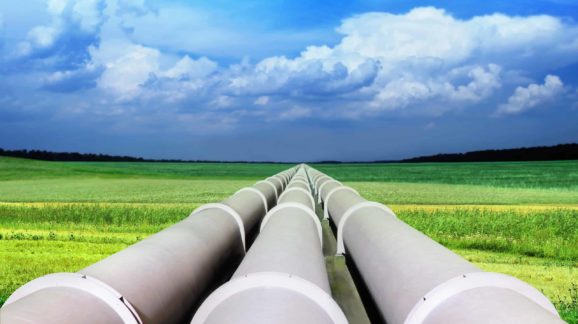Why the Mountain Valley Pipeline Matters

Photo Credit: Getty
In what came as a surprise to few, if any, observers, the proposed Mountain Valley Pipeline has hit another judicial setback that will delay its completion date and could conceivably kill it off. It is yet one more roadblock in getting the Appalachian region’s surplus of natural gas to population centers on the East Coast, where it is needed.
Fracking has been very good to Appalachia, but it could be even better. By around 2015, the region was more than self-sufficient in natural gas, and up through 2019 had built 10 billion cubic feet per day (Bcf/d) of new pipeline capacity to take some of the rest to markets outside of the region. But in the last few years, activist opponents have used federal environmental laws to stymie additional pipeline capacity, jeopardizing future growth of energy production and jobs. This includes Mountain Valley.
It is becoming difficult and bordering on impossible for major energy projects to navigate all the relevant federal statutes, such as the National Environmental Policy Act, Clean Water Act, and Endangered Species Act. This includes Mountain Valley’s proposed 303 miles of 42-inch pipeline carrying natural gas from West Virginia to Virginia. Years of developing the required Environmental Impact Statement (EIS) are followed by court challenges, a revised EIS, additional challenges on other grounds, and on and on.
It was already enough of a chore to get a project approved during the generally pro-pipeline Trump administration, but now it is even harder under President Biden’s extreme appointees at the Department of Interior, Council on Environmental Quality, and other relevant agencies. This is particularly true of any projects related the fossil fuels (coal, oil, natural gas), as the administration and environmental activists seek to tie up such projects in red tape. The climate change-justified roadblocks may get even worse under new policy guidance from the Federal Energy Regulatory Commission, or FERC, which must approve natural gas pipelines that cross state lines.
Consider the fate of another Appalachian pipeline, the Atlantic Coast Pipeline. After six years of legal challenges and appeals, the pipeline developers finally prevailed in the U.S. Supreme Court in 2020. Nevertheless, they gave up soon thereafter, once project opponents promised to raise as many as eight other objections on different grounds.
Essentially, pipeline developers have to go undefeated through multiple legal challenges costing millions of dollars over many years. Little wonder few are succeeding and fewer are even trying.
Mountain Valley’s latest snag involves two fish species, the Roanoke logperch and the candy darter, classified as endangered under the Endangered Species Act. A federal court was not convinced that the required Biological Opinion, developed by the U.S. Fish and Wildlife Service during the Trump administration, showed that the fish would be sufficiently protected. But even if a revised Biological Opinion demonstrates that the Roanoke logperch and candy darter won’t be harmed, there are many proverbial fish in the sea—other endangered species to litigate over (West Virginia has 30 and Virginia has 77) or violations under other environmental statutes—that could lead to additional rounds of litigation.
In fact, just a week earlier, anti-pipeline activists convinced the same court to delay the pipeline on completely different grounds, this time involving the pipeline’s previously granted right-of-way underneath a federally controlled forest.
According to the U.S. Energy Information Administration, the Appalachian region has the potential to increase output but is limited by a lack of pipeline capacity. Any additional natural gas supply would be much in demand on the East Coast, which is currently suffering shortages and high winter heating prices. Some could also be used to increase exports of liquefied natural gas, or LNG, to America’s European and Asian allies and thus reduce their reliance on natural gas from Russia.